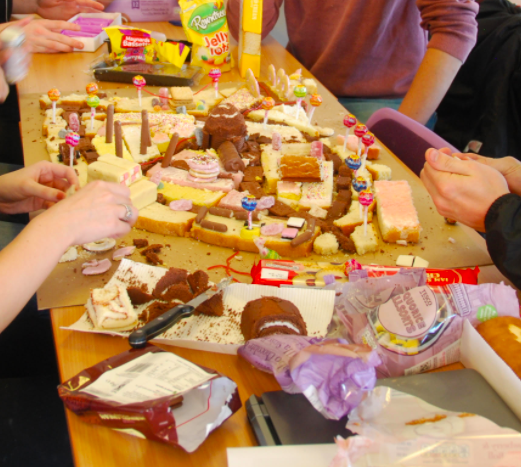Written by:
Community engagement in the urban design process requires collaborative approaches that can build effective dialogue to develop a shared understanding of places, their challenges and their potential. My PhD research investigated playful co-design as a means to develop more engaging and bespoke design responses to deliver what the local community want and need.
The study focused on community shared spaces such as parks, recreational areas and community buildings. Such spaces provide an infrastructure for social coherence by supporting community engagement through integrating peoples’ daily lives. The playful nature of community space naturally encourages a playful approach to engage the community in the future co-design of an environment.
Playful co-design can encourage an open dialogue and create a shared understanding of a local community’s aspirations for an area. My research explored the notion that when we allow ourselves to become absorbed in play, we sometimes achieve far more. As a result, the end product may be better as people find a balance between freedom and control, taking risks by experimenting and exploring with others. Play provides the common ground for those involved to engage on a level playing field, a situation in which everyone has the same chance of succeeding and understands how to play.
The research observed that design provides an additional element to play, the ability to communicate visual information. Visual images can present the whole pattern of ideas simultaneously. Expressing thoughts as the forms take shape. Design can enable many ideas to be expressed and communicated at once, ideas that would be much harder to explain with words, enabling literal or abstract expression of information. It is the visual arts ability to communicate patterns of information concurrently and play’s ability to engage an audience that makes the combination of play and design such a valuable tool to explore and experiment with.
Architects and designers naturally play with materials to communicate and share ideas for future environments. My study put object play processes in the hands of communities to encourage participation at a more in-depth level in the consultation process, meaning communities were given the necessary attention at each stage of the co-design process. The research utilised the worldwide language of play to engage participants in a narrative that explored new ideas and concepts for co-designing community shared space by asking the future users to model their ideal recreational space using cakes, biscuits and sweets. By turning ‘a bit of fun’ into something serious and legitimate, the research explored how symbolic object play engages experimentation through playing with forms, changing the original meaning or notion of an object.
Specific play tools were identified and specified to represent building materials for the co-design construction process. Larger cakes provided the foundation, as these can be quickly cut to provide a bottom layer on which to construct the model. Smaller cakes and biscuits were the building blocks to create structures. Whilst the sweets added the detail, the finishing touches to the urban design model. The play tools provided endless opportunities for participants to use their imaginations, manipulating the items into features and aspects within the urban design scheme.
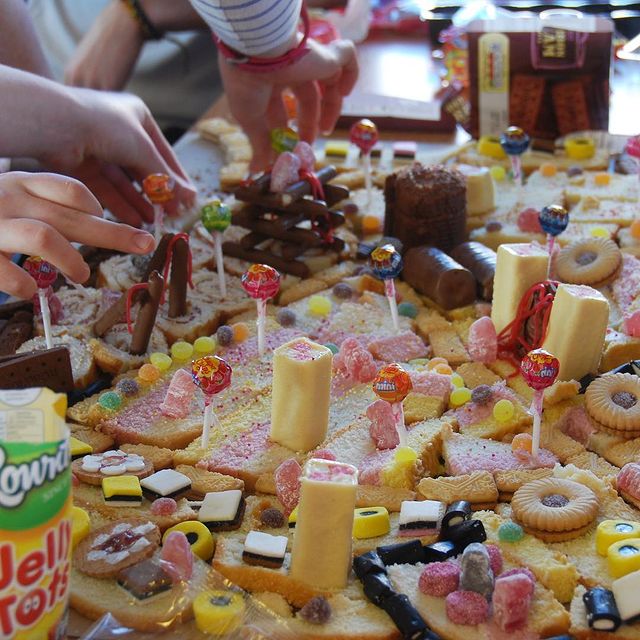
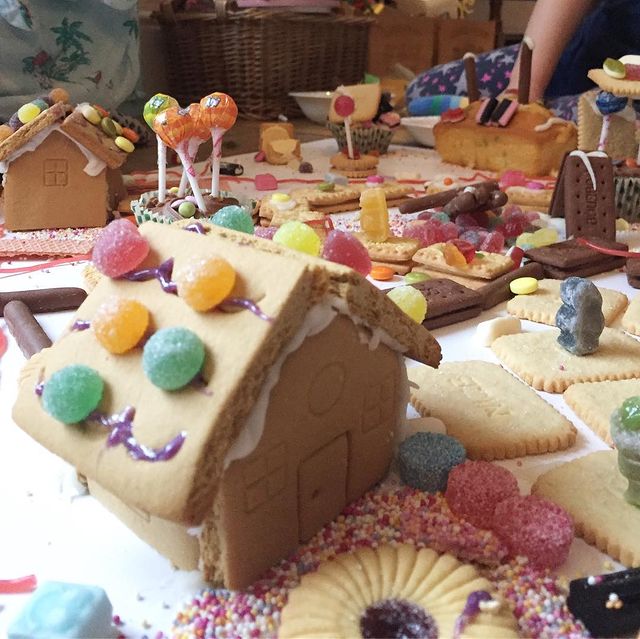
It is not only the effortless flexibility and accessibility of the materials that make them so appealing. The future users of the urban space were invited to design with objects that they connected to in a personal, emotional and fun manner, rather than on an artistic, abstract level. This aspect of the process allowed participants to engage through a material that resonated, removing any judgements made on individuals artistic abilities. Cakes, biscuits and sweets helped reduce individual anxiety by avoiding statements such as ‘I can’t draw’ or ‘I am not good at art’. The playful element of the modelling allowed new perspectives and ideas to emerge, solving urban design challenges in a fun, engaging manner.
Using a three-stage design process the cake models were translated into scaled drawings that allowed the community to realise their ideas and co-refine the outputs into a final design proposal and mood boards. The output created a community-led specification co-designed with the local people.
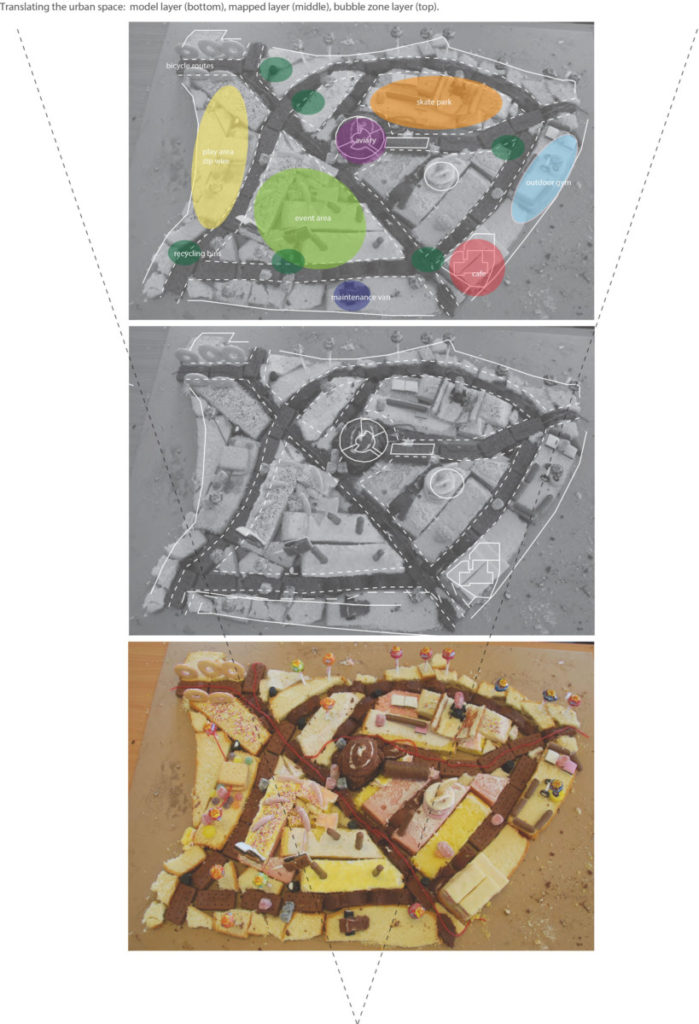
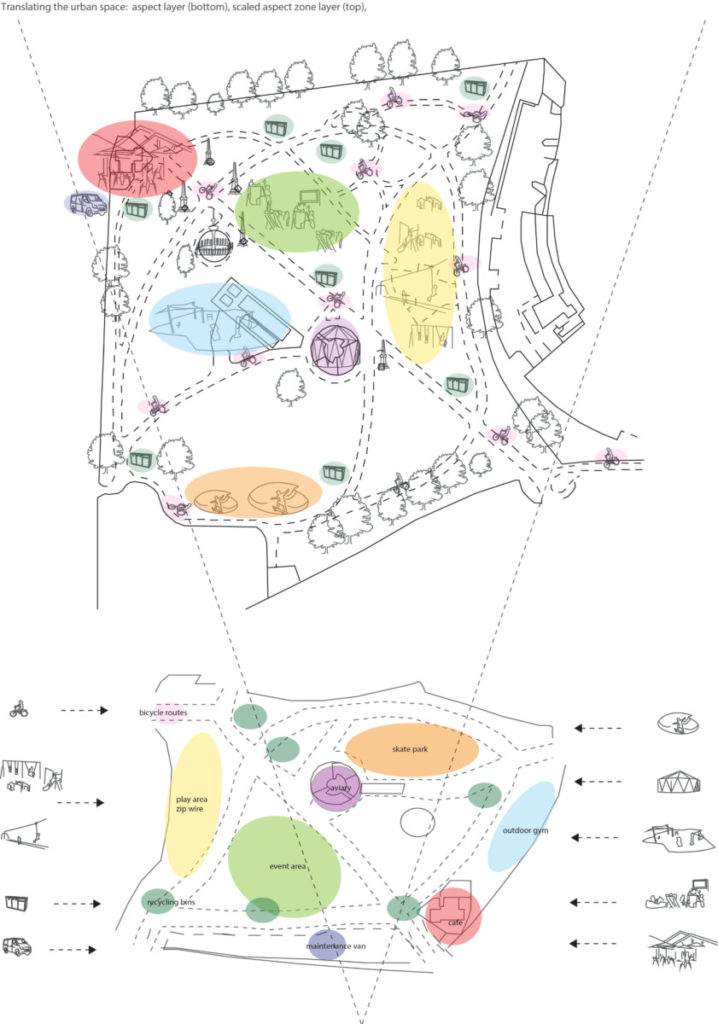
The Play as a Design Tool process was successfully tested with three UK urban design projects. The below photograph illustrates Springfield Recreation Ground, in Corsham. A community shared recreational space designed and implemented by the local community using Play as a Design Tool.

You can contact Kate via her Instagram account @kate_langham_codesign or send her an email via kate@langhamproduct.com.
